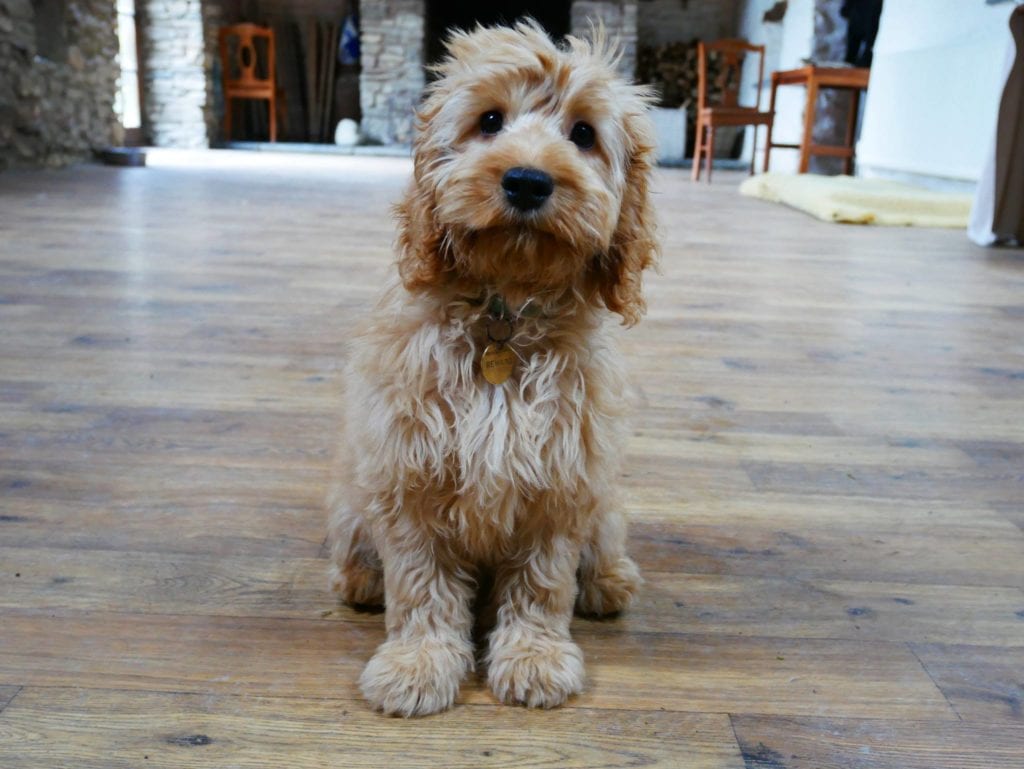
You think you’ve got it all figured out. The house is immaculate, children settled in school, work is on the up and up. But something’s missing. You start to feel a little…well…Proody. Yep, you read that right, you’re Proody. When the want, sorry, need, for a puppy becomes all consuming and you can think of nothing else but having one of your own. Suddenly everywhere you go there are puppies, with their little scrunchy faces and waggy tails, waiting for you to fall madly in love with, even for a few moments. Films about dogs, dogs on the streets, dogs on social media, dogs out for lunch or coffee. Dogs, dogs, dogs. You’re feeling broody for a furry baby…you are Proody.
No longer do your friends’ faces hold your attention when there are the soft, silky ears of a dog to play with. Conversations get interrupted as you are lost to deep, dark chocolate eyes and an overwhelming, yet familiar, feeling of Proodiness.
So after months of longing, wishing and planning, the day has arrived – it’s time to bring that little bundle of fluff home to the coop. But now you’ve decided you’re getting a puppy, how do you make your new addition feel part of the family as quickly as possible?
Here are our 10 puppy tips for making their transition to home life as seamless as possible.
1 – Comfort Blanket
Organise for your puppy to receive a blanket that smells of your home whilst they’re with the breeders and for them to take away when they come home so that they are surrounded by some familiar smells. This will provide a great sense of comfort in the first few days of arrival.
2 – Pup Prep
Items that you’ll need for your puppy include a collar and lead, appropriate sized crate with a non spill water bowl, plenty of comfy bedding, food bowl, pacifying chews and lots of poo bags!
3 – On the Menu
Investigate which food your puppy is currently fed by the breeder and take a small bag of this to help convert your puppy gradually over to your food of choice (if this is what you aim to do). Prepare a small stuffed Kong in advance of your puppy arriving, this will help him settle and entertain him.
4 – Making Their Mark
Take your puppy straight to the garden when you get home. If there is a certain area you wish your puppy to use, ensure that they keep to this area from the very start. Once they have peed (and hopefully pooed) you can take them inside.
5 – Boundaries
Decide before your puppy arrives which areas of the house they are allowed in. Will your puppy be allowed upstairs? Or into bedrooms? Think about the furniture, will they have to stay off all of it, or be allowed on only certain chairs for example? Be consistent, as your dog grows bigger or comes inside mucky from a walk, they won’t be able to understand why they are no longer allowed on their favourite sofa.
Keep your dog on a lead around the house to start with. This way, they can investigate their new home, but it will be easy for you to guide them away from places they won’t be allowed to go. Do allow your puppy to take their time investigating and familiarising themselves with their new environment.
6 – Smells calming
One additional product we recommend investing in is the Adaptil plug-in. Releasing a synthetic copy of the pheromone a mother bitch gives off to let her pups know she is nearby, the plug-in can be located next to your puppy’s crate for additional comfort.
7 – Making Introductions
Once your puppy has has investigated their surroundings, they are ready to be introduced to other members of their human family. Avoid a mass meeting as this can be extremely overwhelming. Keep them on a lead, stepping on it as a tether to keep all their four paws on the ground as they greet their new family. This way, they learn from the beginning that jumping up is unacceptable. Remember to reward them for being calm, thus developing a good foundation for behaviour moving forward.
8 – Paw Pals
We would recommend that dogs meet on neutral ground. However, as your puppy will not likely be fully vaccinated at this point, we suggest that existing family dogs meet new additions in your garden. Keep your puppy on a lead so that they can be easily removed if they become too boisterous towards your older adult dog. If your adult dog is good with other dogs, they are likely to accept another puppy fairly easily. If this isn’t the case, keep both on a lead for the interaction just in case. If any negativity occurs, they will easier to separate. Use treats or a favourite toy to reward appropriate behaviour in your adult dog.
When it’s time to enter the house, ensure that all toys, chews, food and bowls are out of the way so that there is no competition over these valued resources.
9 – Feed, Peed, Repeat
From the first night, it’s best to get your puppy into a routine so they know what to expect. Give your puppy their first meal in their crate so they associate it with it positively. Make sure they have peed (and pooed) outside before trying to settle them for the night. Make a comfortable bed inside their crate with the clock nearby, heat brick/hot water bottle and check their Adaptil is plugged in nearby. Be aware that your puppy is likely to cry for a little while as they find themselves on their own for the first time. As hard as we know it can be to listen to them cry, it’s important not to go and give them attention when they do. Unless you are prepared to have a puppy party at 3am everyday! With the right comforts, they should settle fairly quickly. And they will be very happy to see you in the morning!
10 – Solid foundations
Be firm to be fair in the future. It’s much easier to start out the right way than to try and change undesirable behaviours later on.
We hope you and your puppy settle into your new life together seamlessly. Be sure to look out for future articles on puppy socialisation and training – coming soon!


